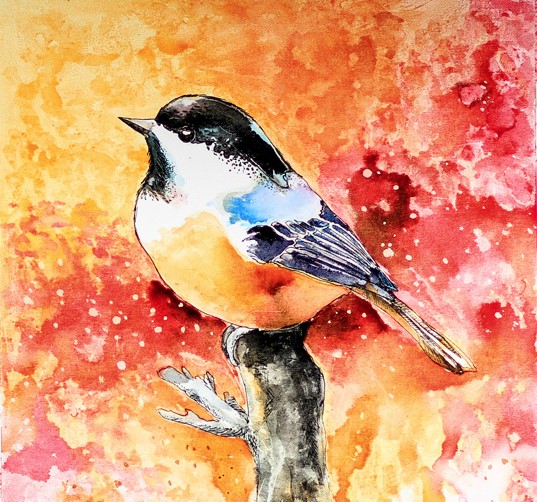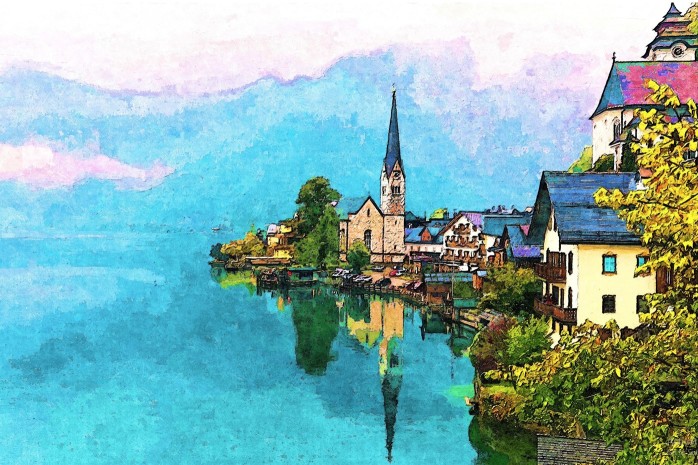Tips to select great Watercolor Artwork With Simple Techniques

Watercolor is the most loved medium of art for enthusiasts and artists for a long time. Even though you need a brush and colors to begin, watercolor is a material with numerous imaginative prospects. By consolidating household supplies into your canvas, you can do work with fascinating surfaces just as fluid, amusing colors that feature the best qualities of the medium.
The watercolor paints are not the same as other paints available today in the market, making it an incredibly extreme art to excel in. Learning another type of art is still the best experience that a craftsman has all through his/her life. For example, you may be an unbelievable oil painter; however, should not something be said about watercolor canvases. Normally, painters of each sort feel a touch of toughness while learning the watercolor painting. The paints are made of shades suspended in a water-solvent medium. When you creat art in watercolors, light reflects off the white of the paper and skips up through the hues, giving it a radiance that can be genuinely magical.
“The creation of a painting takes as much trickery and premeditation as the commitment of a crime.” Edgar Degas

Let’s grasp the medium with these must-know watercolor tips.
-
Flat Wash: A flat wash makes up a bulk of watercolor painting; it's such an essential technique that you don't understand you're doing it. Soak your brush in water and paint and afterward spread it over your planned surface. The significant thing to remember is to ensure that your shading looks even because a flat wash should show up as a single, intense color on your paper.
-
Wet on Dry: Wet on dry is another essential approach. It's made by painting a wash on paper. Let it dry and then apply paint on top of it. Since watercolor is transparent, you will observe the base layer behind that stroke. Learners take the dry paper and begin art painting using the wet watercolor with a large brush. If you ever need to perceive what watercolor painting online is, the artwork that uses this technique will show you.
-
Wet on Wet: The wet-on-wet technique exhibits the best nature of watercolor paint—it’s the capacity to make wonderful ethereal washes. To acquire this technique, wet piece of the paper with your brush. Then, dip your brush into another shading and delicately dab it on the damp part and watch as the color plumes.
-
Dry Brush: Take a dry brush and dip it into your paint. Subsequently, spread it over a dry bit of paper. The outcome will be an exceptionally finished imprint that is amazing for implying fur or hair.
-
Graded Wash: This graded wash is the transition from light to dark. Start by art painting dim—load up your brush with the most color—and afterward drag it over the paper. On the following pass, include less color your brush and swipe it over the paper, so it marginally covers with your first line. The two gatherings will start to meet and, in the long run, seem as though one. Repeat this technique, including less and less color, until you have your ideal apparent range.
-
Splash the Watercolor: One important trick to add some vitality to your watercolor painting is to practice this watercolor method. This can help recommend a water shower or drifting residue. Just take your paintbrush between your thumb and middle fingers. With the help of your index finger, pull back on the fibers and let them nip forward. This strategy is somewhat impulsive yet can yield some entertaining outcomes.
-
Layer the Colors: Watercolor is a flimsy medium; so, you'll have to develop shading continuously. This is another benefit to the medium, as you can do some shading blending directly on the paper. Take one shading and lay it down. Permit it to dry and afterward return with another shade. You'll see wherever they cowl, the shade blends, and you are left with an alternate shading. This is incredible for working up tissue tones.
-
Use Masking Fluid: Masking fluid is a thin material that is typically latex based. It may be applied with a brush to shield areas in artwork from accepting washed applications. Since the white of the paper is so significant in a watercolor painting, masking fluid turns into a substantial device.
-
Realize When to Stop: Probably the big challenge that an artist faces is realizing when to stop. We regularly wind up in an "imaginative stream", where making is enjoyable to the point that we don't need it to end. Knowing when a work is done is a sensitive issue without a simple answer.
There is a wealth of watercolor techniques you must master to draw beautiful paintings . Watercolor is a delicate medium, yet when dealt with right, it tends to be an adaptable and flexible art method that is positively worth seeking after.
